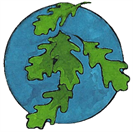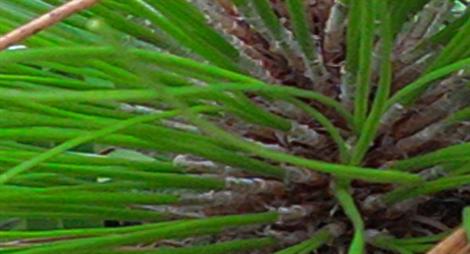
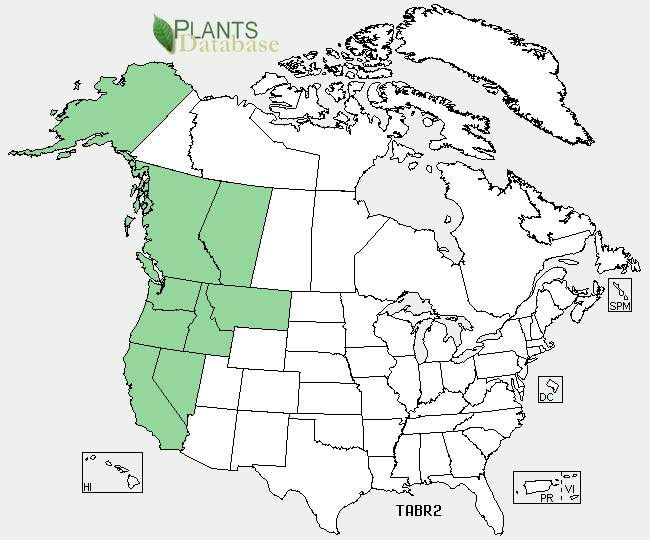

Shortleaf Pine (Pinus echinata Mill.)
Common names: Yellow pine, Old
Height: 75-100ft
Diameter: 2-4 ft
Showy flower: no
Fall colors: no-evergreen
Drought tolerant: no
Annual rainfall: 20-80
Frost Free Days: 90
Minimum Tempurature (F): -33
Growth Rate: rapid
Longevity: 200-450 years
State List: AL, AR, DE, FL, GA, IL,
KY, LA, MD, MO, MS, NC, NJ, NY,
OK, OH, PA, SC, TN, TX, VA, WV
Common names: Yellow pine, Old
Height: 75-100ft
Diameter: 2-4 ft
Showy flower: no
Fall colors: no-evergreen
Drought tolerant: no
Annual rainfall: 20-80
Frost Free Days: 90
Minimum Tempurature (F): -33
Growth Rate: rapid
Longevity: 200-450 years
State List: AL, AR, DE, FL, GA, IL,
KY, LA, MD, MO, MS, NC, NJ, NY,
OK, OH, PA, SC, TN, TX, VA, WV
An evergreen native conifer, Shortleaf pine has the widest distribution of any southeastern pine species. It commonly attains 100 feet in height and 2 to 3 feet in diameter. A straight single trunk supports a narrow, conical to pyramidal or flat topped crown. It has a deep tap root and lateral roots about 24 inches beneath the surface and is wind firm. Pinus echinata's ...more


Slash Pine (Pinus elliottii Engelm.)
2 variations: elliottii, and densa
Height: 50-100 ft
Diameter: 2-3 ft
Showy flower: no
Fall colors: no-evergreen
Drought tolerant: low
Annual rainfall: 40-80 inches
Soil Needs: moist, pH 4.0-6.4,
Frost Free Days: 250
Minimum Tempurature (F): -18
Growth Rate: rapid
Shade: Intolerant
State List: AL, FL, GA, LA, MS, NC,
SC, TX ...more
2 variations: elliottii, and densa
Height: 50-100 ft
Diameter: 2-3 ft
Showy flower: no
Fall colors: no-evergreen
Drought tolerant: low
Annual rainfall: 40-80 inches
Soil Needs: moist, pH 4.0-6.4,
Frost Free Days: 250
Minimum Tempurature (F): -18
Growth Rate: rapid
Shade: Intolerant
State List: AL, FL, GA, LA, MS, NC,
SC, TX ...more


Spruce Pine (Pinus glabra Walter.)
Common name: Walter Pine, Cedar
Height: 80-100 ft
Diameter: 2-2.5 ft
Showy flower: no
Fall colors: no-evergreen
Drought tolerant: low
Annual rainfall: 35-66
Soil Needs: pH 3.8-5.6
Frost Free Days: 240
Minimum Tempurature (F): -2
Growth Rate: rapid
Shade: Tolerant
State List: AL, FL, GA, LA, MS, SC
...more
Common name: Walter Pine, Cedar
Height: 80-100 ft
Diameter: 2-2.5 ft
Showy flower: no
Fall colors: no-evergreen
Drought tolerant: low
Annual rainfall: 35-66
Soil Needs: pH 3.8-5.6
Frost Free Days: 240
Minimum Tempurature (F): -2
Growth Rate: rapid
Shade: Tolerant
State List: AL, FL, GA, LA, MS, SC
...more


Distibution maps courtesy USDA PLANTS Database

Red Pine (Pinus resinosa Aiton)
Syn: Pinus resinosa Soland.
Common names: Norway Pine..
Height: 50-100 feet
Diameter: 2-3 feet
Showy flower: no
Fall colors: no-evergreen
Drought tolerant: low
Annual rainfall: 20-40
Soil Needs: sandy, pH 5.1-5.5
Frost Free Days: 80
Minimum Temperature (F): -43
Growth Rate: rapid
ENDANGERED in Connecticut,
Illinois, and New Jersey ...more
Syn: Pinus resinosa Soland.
Common names: Norway Pine..
Height: 50-100 feet
Diameter: 2-3 feet
Showy flower: no
Fall colors: no-evergreen
Drought tolerant: low
Annual rainfall: 20-40
Soil Needs: sandy, pH 5.1-5.5
Frost Free Days: 80
Minimum Temperature (F): -43
Growth Rate: rapid
ENDANGERED in Connecticut,
Illinois, and New Jersey ...more



Sand Pine (Pinus clausa Chapm ex Engelm.) Vasey ex Sarg.
Common names: Scrub pine, Spruce
Height: 80 ft
Diameter: 18-20 inches
Showy flower: no
Fall colors: no-evergreen
Drought tolerant: low
Annual rainfall: 40-65
Soil Needs: moist, sandy, pH 4.2-5.5
Frost Free Days: 265
Minimum Temperature (F): 2
Growth Rate: slow
Longevity: less than years
State List: AL, FL, GA, MS, NC
Common names: Scrub pine, Spruce
Height: 80 ft
Diameter: 18-20 inches
Showy flower: no
Fall colors: no-evergreen
Drought tolerant: low
Annual rainfall: 40-65
Soil Needs: moist, sandy, pH 4.2-5.5
Frost Free Days: 265
Minimum Temperature (F): 2
Growth Rate: slow
Longevity: less than years
State List: AL, FL, GA, MS, NC
Sand pine has 2 geographic specific variations, the difference being cone behavior. In the Florida peninsula, sand pines are var. clausa, known commonly as Ocala Sand pine. They have mostly serotinous cones, meaning they only open when heat activated. The other variety, var. immuginata occurs in the Florida panhandle and southern Georgia, and is known as ...more

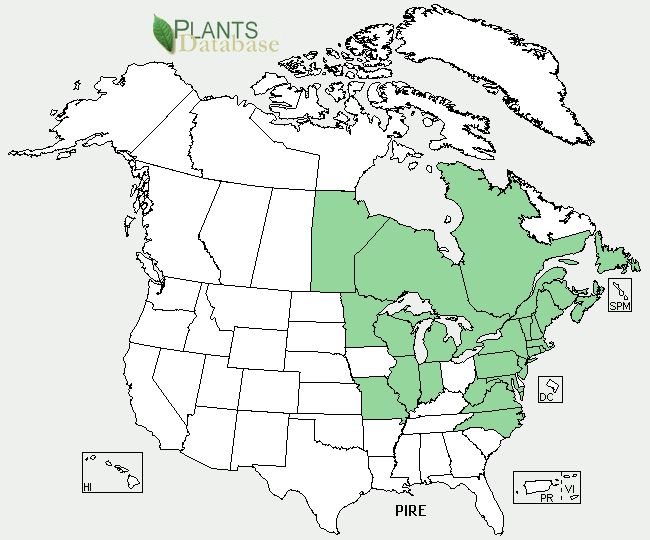
A native conifer, Pinus resinosa, averages between 75 and 80 feet but may grow to 200 feet in optimal sites. The largest trunk d.b.h (diameter at breast height) on record is 59.6 inches but the trunk base typically only reaches widths of 2 to 3 feet. Red pines have a single stem, or trunk, that supports a symmetrical, dense, and oval crown that is supported by
...more
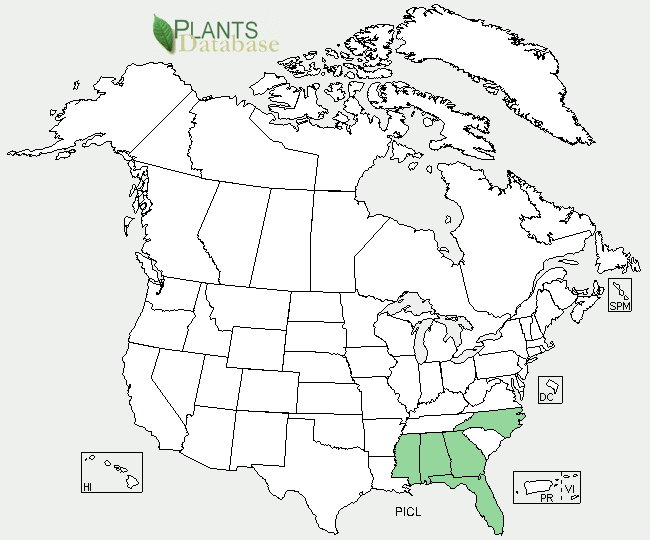
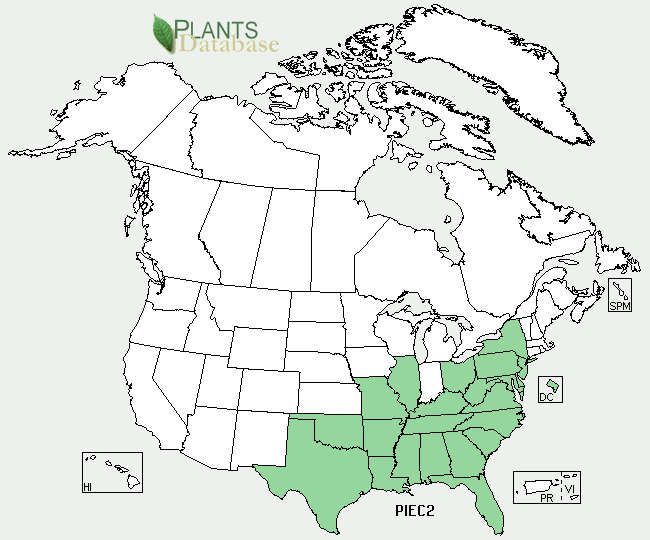
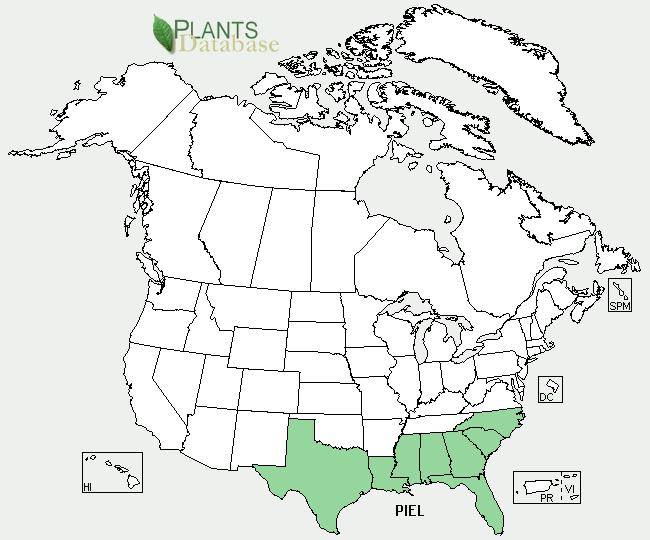
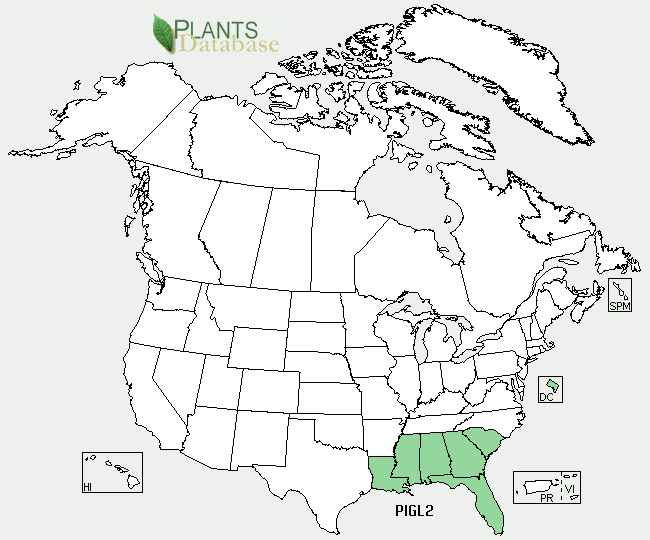
An uncommon tree, it is usually found singly in mixed forests. This native evergreen conifer gets its name because of the way it produces smaller branches between the major branch whorls, similar to a spruce. A medium sized tree, Spruce pines usually grown 80 to o100 feet tall and reach 2 to 2.3 feet in diameter. The trunk is straight with horizontal, somwhat drooping ...more
Slash pine is a native evergreen conifer found across much of the southern United States. Pinus elliottii, the regular slash pine, is the most abundant and widely spread, whereas Florida Slash Pine, var. densa, is native only to central and southern Florida. The two varieties can hybridize were their ranges overlap. There are several
distinguishing ...more
distinguishing ...more




™
- Trees
- A-Z scientific
- A-Z by Common Name
- Families
- Aceraceae Maple Family
- Anacardiaceae Sumac Family
- Annonaceae Custard Apple Family
- Aquifoliaceae Holly Family
- Arecaceae, Palm Family
- Betulaceae Birch family
- Bignoniaceae Trumpet Creeper Family
- Burseraceae Frankincense Family
- Caprifoliaceae Honeysuckle Family
- Chrysobalanaceae Coco-plum Family
- Cornaceae Dogwood Family
- Cupressaceae Cypress Family
- Cyrillaceae Cyrilla Family
- Ebenaceae Ebony Family
- Ericaceae Heath Family
- Fabaceae Pea Family
- Fagaceae Beech Family
- Hamamelidaceae Witch Hazel Ffamily
- Hippocastanaceae Horse Chestnut Family
- Juglandaceae Walnut Family
- Lauraceae Laurel Family
- Leitneriaceae Corkwood Family
- Magnoliaceae Magnolia Family
- Meliaceae Mahogany Family
- Moraceae Mulberry Family
- Myricaceae Bayberry Family
- Myrsinaceae Myrsine Family
- Myrtaceae Myrtle Family
- Nyctaginaceae Four Oclock Family
- Olacaceae Olax Family
- Oleaceae Olive Family
- Pinaceae Pine Family
- Platanaceae Plane Tree Family
- Polygonaceae Buckwheat Family
- Rhamnaceae Buckthorn Family
- Rosaceae Rose Family
- Rubiaceae Madder Family
- Rutaceae Rue Family
- Salicaceae Willow Family
- Sapindaceae Soapberry Family
- Sapotaceae Sapodilla Family
- Simaroubaceae Quassia Family
- Styracaceae Storax Family
- Symplocaceae Sweetleaf Family
- Theaceae Tea Family
- Tiliaceae Lindon Family
- Ulmaceae Elm Family
- Taxaceae Yew Family
- Yucca Family
- Browse by State
- Rare or Endangered Species
- Trees_with_Special_Uses
- Tallest and Biggest
- Noxious Weeds
- Causes
- About Us
- Our Stores
Want to add your tree to our picture gallery? Click here for details!
-Color denotes a tree that is rare or endangered


Custom Search
We are part of the Hubpages community.
Click here for more info.
Click here for more info.

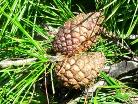
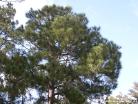
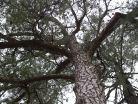
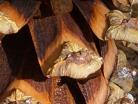
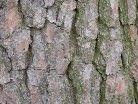
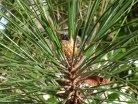
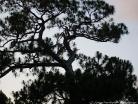
Tree lists:
•A-Z by scientific
name
•A-Z by common
name
•By Family
For state A-Z list click state name below.
•A-Z by scientific
name
•A-Z by common
name
•By Family
For state A-Z list click state name below.


Pine (Pinus) Genus
For an A-Z list (by scientific name) of native pine trees click here.
Want to see another family? Select it here:
Pine trees are one of the most varied and widely spread
genus of native tree species in North America. From the
cold mountains of Alaska to Nova Scotia in the east, from high
wind-swept Rocky Mountain cliffs to the fertile Appalachian
forests, on seaside borders, swamps, dry foothills, lowlands
and everywhere in between, pine trees can be found. Adapted
to so many environments, pine trees are hardy survivors in
their native habitat. The pine trees of North America were
used by Native Americans for treatments of respiratory ailments, in canoe building and even as food. Today native pines are one of the most valuable commercial timber sources and continue to be used for construction, furniture, pulpwood, land management and more.

If you already know which species you want to see, selected it here to go to its botanical profile page:
Click to enlarge




